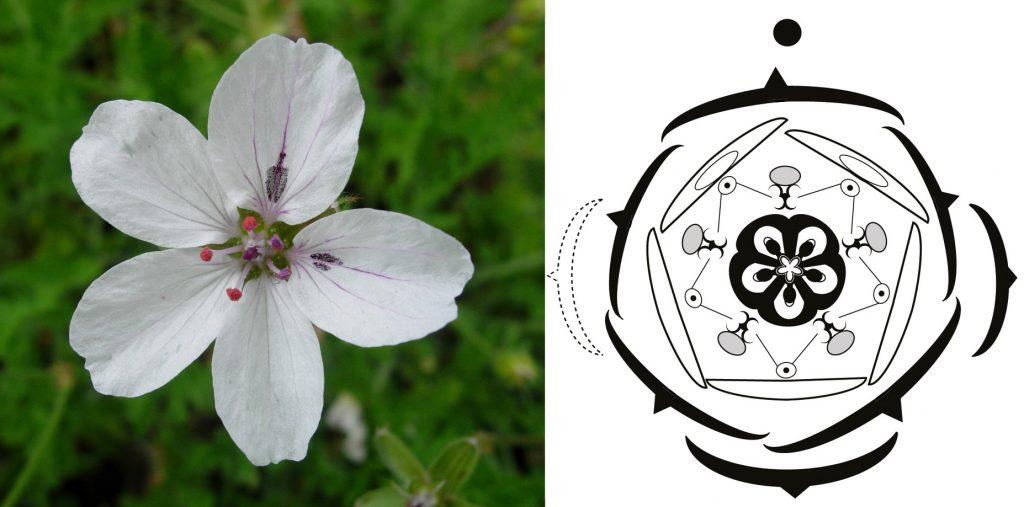
There are about 390,000 known flowering plant species on earth, with a far-reaching floral diversity. Flowers have evolved to become the essential systems necessary for reproduction and they have attained high levels of diversification linked with various pollination mechanisms. Despite our attachment to the beauty of flowers, knowledge of their intrinsic structure and morphology remains poorly known. Creating a book on floral diagrams forced me to look at flowers in a different way, exploring their intrinsic architecture and hidden details. Despite a career in studying flower morphology, I can only marvel at the intricacies of flowers that are often hidden from view, even in species that we think we know so well.
Floral diagrams represent an unparalleled tool to describe the internal structure of flowers, providing a wealth of detailed information that cannot be shown with photographs. As floral diagrams are two-dimensional representations of flowers, they provide the ground plan of the flower in the same way as architecture does for buildings. They allow for a clear understanding of the position and special attributes of floral parts, including general patterns that are conserved among specific groups of plants. Therefore, floral diagrams are an essential tool to fully comprehend the essence of flowers as they enable us to compare different morphologies and to recognise specific trends among them as a reflection of affinities of plant groups. They are the obvious counterpart for understanding the gene expression acting on the floral development and give clues about the mechanisms of pollination.

My book covers 220 diagrams of flowers taken from 166 families and describes the morphological characteristics of the majority of families of flowering plants organised following our most recent knowledge of relationships based on molecular phylogenies. The book presents many facets, including hypotheses about floral evolution. This will be invaluable for those wishing to understand the principal floral characteristics of families for the identification of plants, or the major evolutionary trends affecting floral diversification.

Constructing floral diagrams remains a personal encounter with flowers, bordering the limits between science and arts. The book on floral diagrams is based on my observations of flowers in the field and laboratory and aims to reproduce the morphological diversity of flowers in the best possible way. This book is a second edition of a first version that has been much successful. As a source of information, the book is timeless and stands to have a very long shelve-life in being an essential reference work for any student or scholar in natural sciences, horticulture, or artist looking for inspiration.
Title: Floral Diagrams, Second Edition
Author: Louis Ronse De Craene
ISBN: 9781108825733
Latest Comments
Have your say!